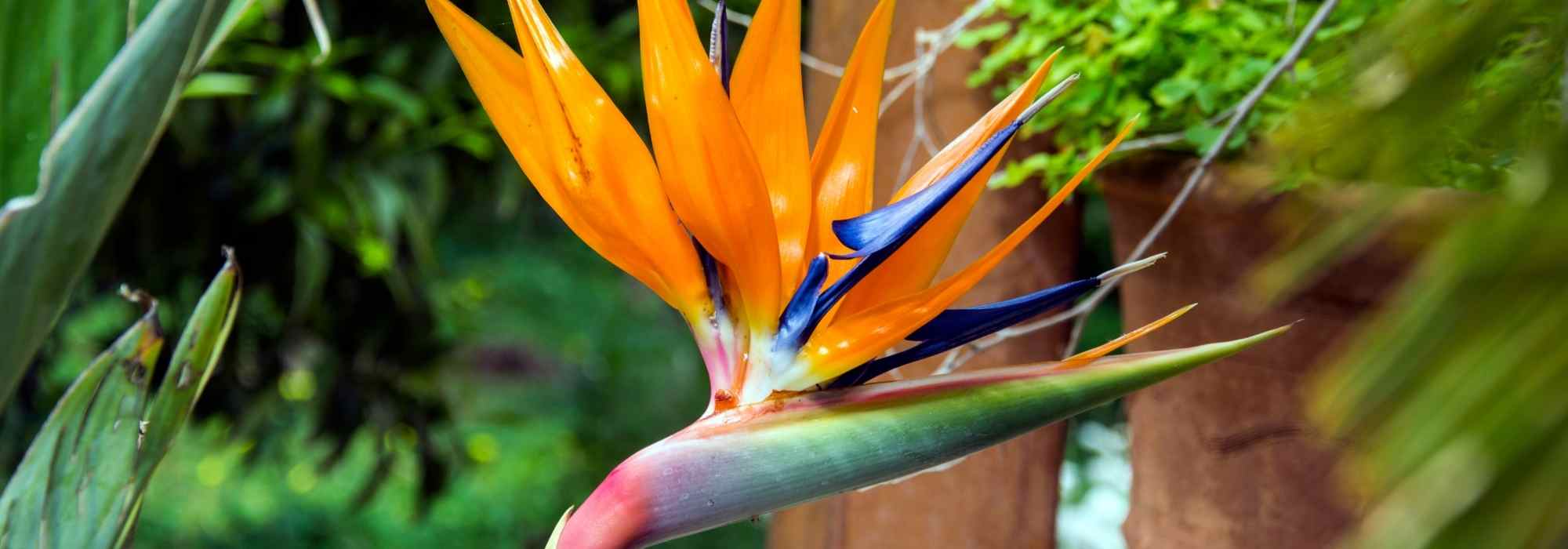
To grow Strelitzia in a pot
On your balcony, terrace or indoors
Contents
The Strelitzia, more commonly known as “Bird of Paradise”, is a stunning tropical plant with very distinctive yellow-orange and blue flowering that evokes plumage of an exotic bird. If Strelitzia Regina is florists’ favourite, Strelitzia nicolai and Strelitzia juncea are just as impressive! This frost-tender plant (minimum 5°C) should only be grown outdoors in our warmest regions. In areas subject to harsh winters, growing in pots is the solution to create an exotic display! All gardeners can admire it in large, very luxuriant containers to place on the terrace throughout the warm season or to grow as an indoor plant. Green escape guaranteed! Bird of Paradise proves easy to grow provided it lacks neither food, water nor warmth.
Discover our tips to succeed in growing it in a pot!
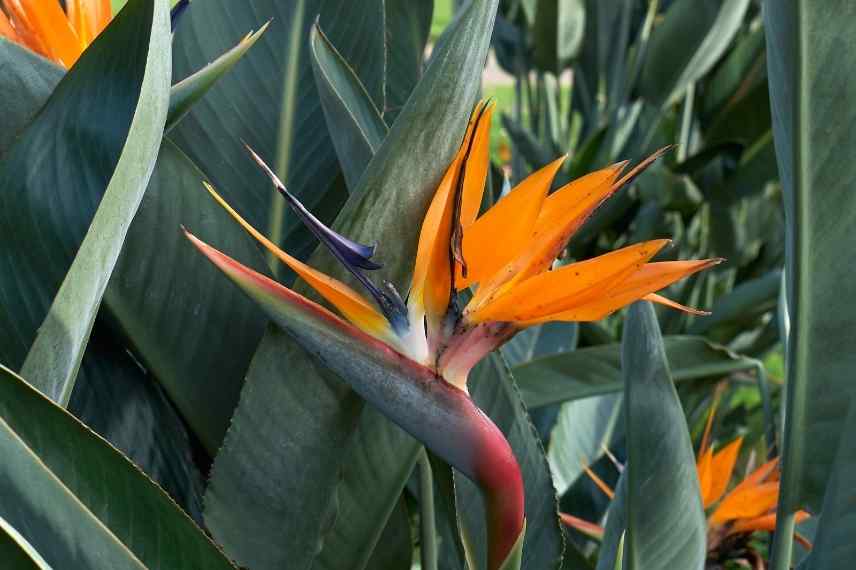
Superb Bird of Paradise or Strelitzia
How to grow Strelitzia in a pot?
When to plant?
For container culture indoors, you can plant Strelitzia all year round. Otherwise, you can place it from March until mid-May, taking care to protect it from possible frost by keeping it sheltered in a warm, bright spot until it can be moved out to the terrace or balcony.
Which pot to choose?
Strelitzia is a large perennial that forms an imposing clump. The smallest varieties do not exceed 80 cm in height, while the largest Strelitzia reach about 1.50 to 1.80 m tall in the ground. In a pot, plants remain somewhat smaller. Consequently choose a suitably large, wide and deep container, in any case big enough for it to develop well. Choose a large pot of at least 45 cm in diameter, one or two sizes bigger than the original pot, with a pierced base to allow water to drain away.
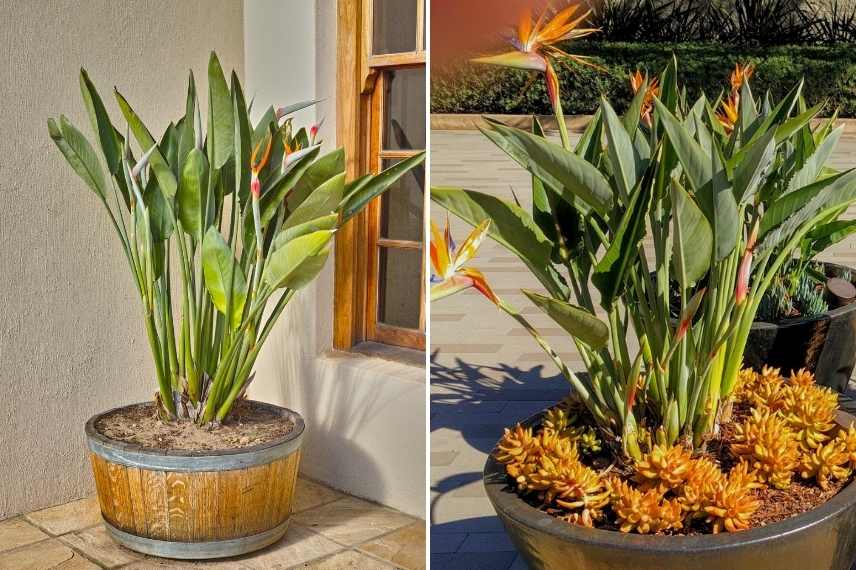
Strelitzias in large pots (photo on the right © KM)
Which substrate to plant it in?
Bird of paradise appreciates a rich, well-draining substrate. A good potting compost enriched with a little garden compost will suit it. Use a good-quality potting compost that retains sufficient moisture.
How to plant it?
- Spread a good layer of gravel, broken pottery or clay pebbles across the bottom of the pot for good drainage (10% of pot volume)
- Plant the rootball in a mix of potting compost and garden compost, lightened if necessary with a little river sand
- Set the plant without burying the collar
- Backfill with the rest of the mix
- Firm the mix lightly around the base with your hands and water
Where to place a potted bird of paradise?
While waiting for warmer weather, you can place the pot in a greenhouse, conservatory or inside the home in a very bright, cool room (ideally around 10–13°C maximum).
- Outdoors: From June to September, if temperature is above 20°C, you can move it onto your terrace or balcony. Avoid temperatures below 12°C. Place the pot in a warm, sunny position sheltered from the coldest winds. It will tolerate light shade in a warm climate. Three to four hours of sun per day are essential for good flowering.
- Indoors: it will thrive in a conservatory or living room near a window or patio door, as it needs a bright spot. Beware of very intense sun through glass which could scorch the foliage; prefer filtered light.
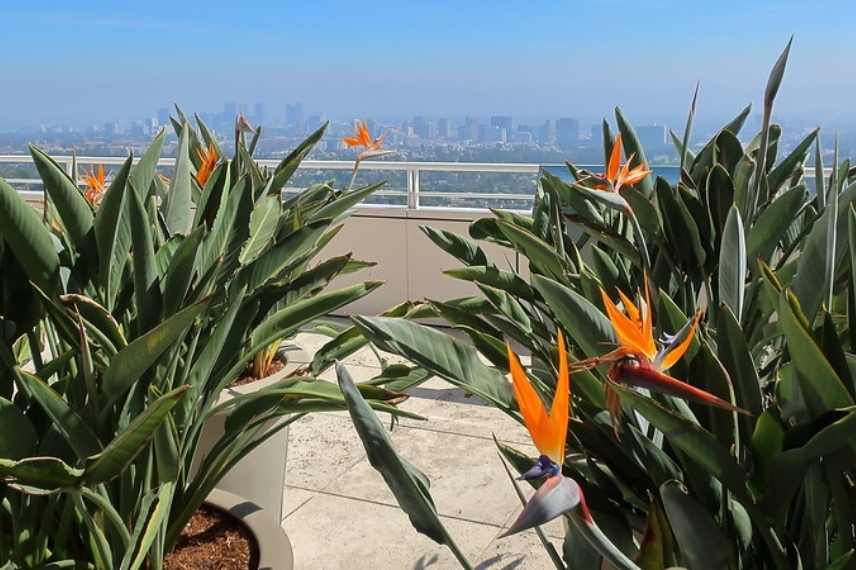
Strelitzias installed on a roof terrace (© Cultivar 413)
How to care for a Strelitzia in a pot ?
Watering
Throughout the growing season, pay particular attention to the water needs of your Bird of paradise in a pot, as substrate dries out more quickly than in the ground.
- In summer: Water regularly twice a week with rainwater if possible. Allow substrate to dry for 3 cm between waterings. Never let water stand in the saucer. Water preferably in the evening without wetting foliage.
- In winter: Allow a well-deserved period of dormancy by greatly reducing water. Water once every 15 days, very sparingly. Excess water at this time can cause rotting of roots or collar.
Fertilisation
In a pot, substrate becomes depleted more quickly than in the ground and Bird of paradise is a hungry plant! From March to the end of August: add a liquid fertiliser for flowering plants to the water and feed twice a month. Stop fertiliser applications in winter.
Protection against cold and frost
As Strelitzia is frost-tender, pots must be stored frost-free in winter, in a bright, cool (around 13°C) and ventilated place (such as a cold greenhouse or conservatory). You can return your pot outdoors in spring as soon as risk of frost has passed.
In very mild regions where temperatures do not fall below -3 to -5°C, you can leave pots outside. However, I recommend protecting them with horticultural fleece and insulating the container from cold with cardboard or bubble wrap, as potted specimens are more vulnerable to temperature fluctuations.
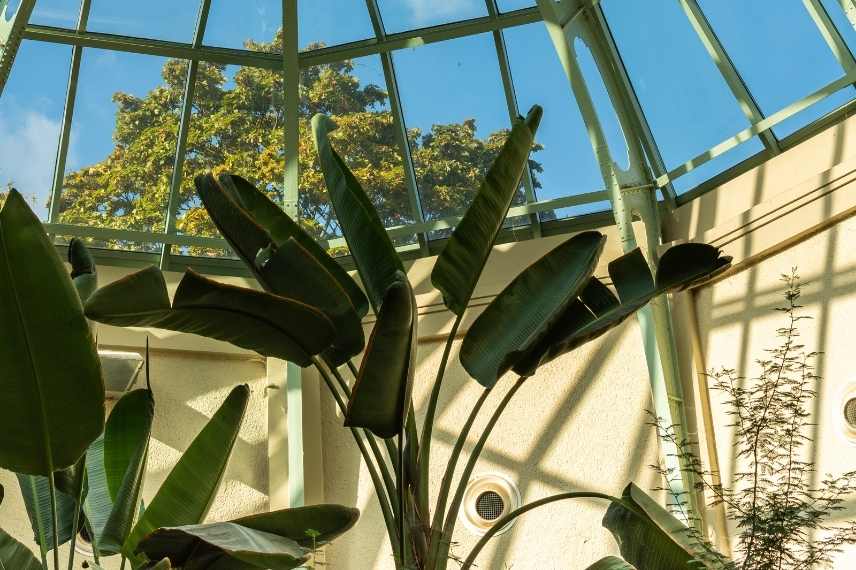
Strelitzias growing in a large conservatory
Pruning
Indoors, clean leaves from time to time with a damp cloth to remove dust. Regularly cut off yellow, spotted or dry leaves and spent stems.
Repotting
Every 2 years, in spring, repot your Strelitzia into a slightly larger pot.
If pot volume and plant size make repotting impossible, simply top-dress once a year in spring. Replace old substrate in the top few centimetres with fresh potting compost and fresh compost.
Possible problems
In pots and indoors, it can be susceptible to infestations of mealybugs. To get rid of them, spray with rapeseed oil after removing these sap-sucking insects manually with a cloth soaked in alcohol.
Further reading
→ Discover everything you need to know about Strelitzia in our comprehensive guide.
- Subscribe!
- Contents
































Comments